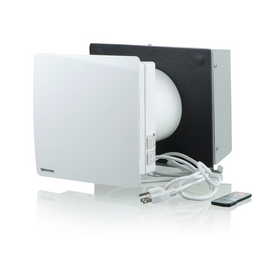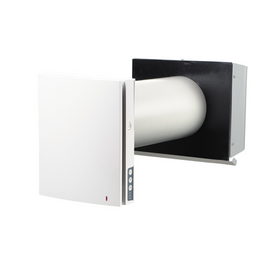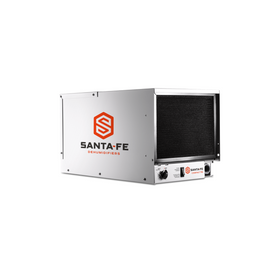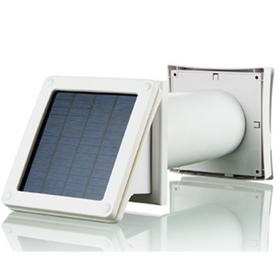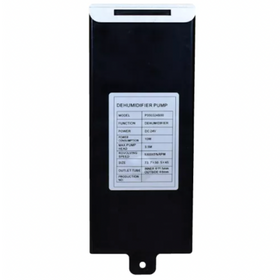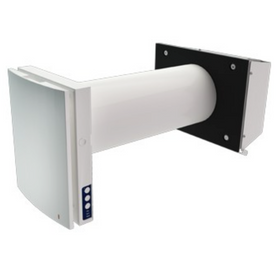
Ceiling Fans: Everything You Need to Know
Last Updated: Apr 11, 2025Ceiling fans have been commonplace in most homes for decades. In many cases, families may have a ceiling fan in every significant room or attached to the main lighting fixtures throughout the house. These fans obviously can improve the air circulation during the hot summer months and offer a refreshing breeze to stuffy, humid homes. However, most homeowners don't realize that those ceiling fans can and should be used during the colder winter months to improve your home heating system's efficiency. Below, Rise offers a complete guide to how you can pick and utilize the best ceiling fans to enhance your home's HVAC equipment's efficiency.
Table of Contents
- How Do Ceiling Fans Work?
- Are ENERGY STAR Ceiling Fans Better?
- Do Ceiling Fans Save You Money?
- Which Way Should Ceiling Fans Turn In the Summer?
- Which Way Should Ceiling Fans Turn In The Winter?
- How Are Ceiling Fans Measured?
- How to Clean Ceiling Fans
- Where To Buy Ceiling Fans
- How Much Are Ceiling Fans?
- How Much To Install Ceiling Fans?
- Who Makes The Best Ceiling Fans

How Do Ceiling Fans Work?
More than three-quarters of all homes in the United States have ceiling fans installed in different rooms throughout the house. However, many homeowners probably only turn on those fans on the hottest of days. Electric-powered ceiling fans were invented back in 1887 when an inventor named Philip Diehl used a motor from a Singer sewing machine and used it to power a fan blade. Before the invention of air conditioners, ceiling fans (along with strategically placed windows) were the primary way people stayed cool during hot summer afternoons.
Today, ceiling fans have evolved to offer a refreshing breeze for the home and often incorporate integrated, energy-efficient LED lights. Ceiling fans generally have a small motor that turns a fan's blades to circulate air throughout the house. Whereas older models of ceiling fans might have used upwards of 75 watts (not including the light source), today's Energy Star certified models could use as little as just 2 watts of energy when operated on low speed. A small ceiling fan with a 2-watt motor and a 6 watt light bulb together can use almost ten times less energy than older, less efficient models.
Are ENERGY STAR Ceiling Fans Better?
ENERGY STAR certified ceiling fans also incorporate improved blade design that ensures a 60 percent improvement in operational efficiency. The best products on the market also allow homeowners to switch the direction the blades turn. As we will see below, this feature is essential for improving the efficiency of your home's HVAC equipment.

Do Ceiling Fans Save You Money?
Ceiling fans can lead to significant energy savings in the home when used correctly. Whereas your central air conditioner might be using upwards of 4,000 watts of energy, a high-efficiency and powerful ceiling fan might be able to keep you comfortably cool with a pleasant downward breeze while only using 10 watts or so. Fans with blades that can reverse their direction will also improve your home heating system's efficiency in the winter.
This helpful Excel sheet provided by the ENERGY STAR program makes it easy for homeowners to calculate how much they might be able to save by opting for the most efficient ceiling fans on the market.

Which Way Should Ceiling Fans Turn In the Summer?
Most homeowners probably think that the fans help move air to cool you down during hot summer days. However, if the blades on your fan are not spinning in the correct direction, then you might be expending energy for no reason. Let's go back to high school physics class to understand why.
Hot air rises because the heated air expands. As it expands, it becomes less dense and floats to the top part of rooms, just like a wood stick, which is less dense than water will float when thrown into a lake. During the summertime, running your ceiling fans in a counter-clockwise direction will create a cool downward airflow that can work with your AC unit to create a pleasantly cool breeze. Suppose you are running your ceiling fans in the wrong direction during the summer months. In that case, you might be redistributing hot air instead of enjoying a cool breeze.
Most models of ceiling fans allow you to run your fans in both directions. While counter-clockwise rotations produce a cooling effect, the clockwise movement of fans pushes the warm air that has risen to your ceiling area down towards the "livable" spaces of your homes. If your ceiling fans don't have that feature, consider this simple upgrade.
Which Way Should Ceiling Fans Turn In The Winter?
During the colder winter months, the blades on your fan can be switched to rotate in a clockwise direction. This change helps to redistribute the warm air, which will naturally rise to the ceiling. By redistributing the warmer, conditioned air produced by your furnace, heat pump, space heater, or fireplace, you can reduce your heating bills while also avoiding those uncomfortable "cold pockets" that inevitably seem to form in some regions of the home.
To change the fan blades' direction for optimum performance in the summer or winter, you will need first to locate the direction switch. This switch is almost always located on the motor housing of newer models of ceiling fans. Once you change the switch, run the fan on the lowest setting to ensure that the blades move in the desired direction. Don't forget to change the direction again once the seasons change.
How Are Ceiling Fans Measured?
Two main measurements evaluate ceiling fans. First, the size of their blades (called blade sweep), and second, the amount of air a fan can move as measured by cubic feet per minute (CFM) per watt of energy used.
The blade sweep of a ceiling fan is the circle's total diameter that you see when a ceiling fan is in operation. The larger the blade sweep, the more area that a fan will circulate air effectively. For example, a 60-inch blade sweep on a large ceiling fan should be able to effectively circulate the air in a large, 350 square-foot living room. Comparatively, a smaller fan with a 29-inch blade sweep might be a good option for a smaller 75 square-foot office or bathroom.
The amount of air that a fan can move divided by the amount of energy it uses is the other primary measurement for ceiling fans. As a general rule of thumb, the higher the CFM rating, the more efficient the fan and the more air it moves. According to the ENERGY STAR program, the minimum efficiency rating for certified ceiling fans is 75 cfm/watt. However, some fans achieve significantly higher CFM/watt ratings.
How to Clean Ceiling Fans
When ceiling fans are not used daily, they quickly become an excellent spot for accumulating dust and other potential air contaminants. Rather than circulating air to improve your home's indoor air quality, a dirty ceiling fan might disperse allergens throughout your home. To quickly (and safely) clean your ceiling fan, an old pillowcase is a great tool.
Use the old pillowcase to eliminate excess dust accumulated on the fan's canopy, down rod, and motor housing. Getting rid of the dust on the motor will also improve the efficiency of operation. Next, slide the pillowcase over each fan blade, press gently, and then slide off to clean the individual blades. When finished, shake out the dust outside and send the pillowcase to the washing machine.

Where To Buy Ceiling Fans
Ceiling fans can be purchased at almost any hardware or home improvement store. Make sure to find the most efficient model appropriately sized for the room where it will be installed. You will also want to ensure that you choose a home with the best mounting system for your home.
Mounting systems will come with different length down rods that can be adapted to ceiling heights. For rooms with lower ceilings, flush mounting fans are most likely the best option.
Check out this ENERGY STAR ceiling fan buying guide for more guidance on finding the best and most efficient ceiling fan for your home.
How Much Are Ceiling Fans?
A ceiling fan's cost is determined by its size, length of the blade sweep, lighting fixture type, and CFM/watt rating. While you can find ceiling fans for well under $100, these are generally less efficient and durable. Expect to pay somewhere around $250-$350 for a quality, high-efficiency ceiling fan.
How Much To Install Ceiling Fans?
Homeowners can install ceiling fans on their own. However, if you don't have the best DIY skills, you can expect to pay between $150 to $350 for both parts and labor. Labor itself might cost up to $80 per hour, so you might want to install several at once to save on labor costs.

Who Makes The Best Ceiling Fans
There are dozens of companies making ceiling fans. Below, we quickly review three of the manufacturers making the most efficient fans on the market.

Modern Forms Fans
This company makes high-energy-efficiency modern ceiling fans that come equipped with smart home technology. Not only can the direction of the blades be reversed manually, but some of their products work with your home's smart thermostat for automatic energy savings. Their smart ceiling fans can be voice-activated with Amazon Alexa or Google Smart Home Assistant.

Minka Fans
Minka Group also has a large section of ENERGY STAR certified ceiling fans. The fans are also Wi-Fi enabled to work with your smart home technology and have various LED lighting options.

Hunter Fans
Hunter has a vast inventory of energy-efficient ceiling fans, including fans with lighting fixtures, remote-controlled fans, outdoor fans, and more. The company even sells a smart fan product with a smart lighting component.
Tobias Roberts
Tobias runs an agroecology farm and a natural building collective in the mountains of El Salvador. He specializes in earthen construction methods and uses permaculture design methods to integrate structures into the sustainability of the landscape.

